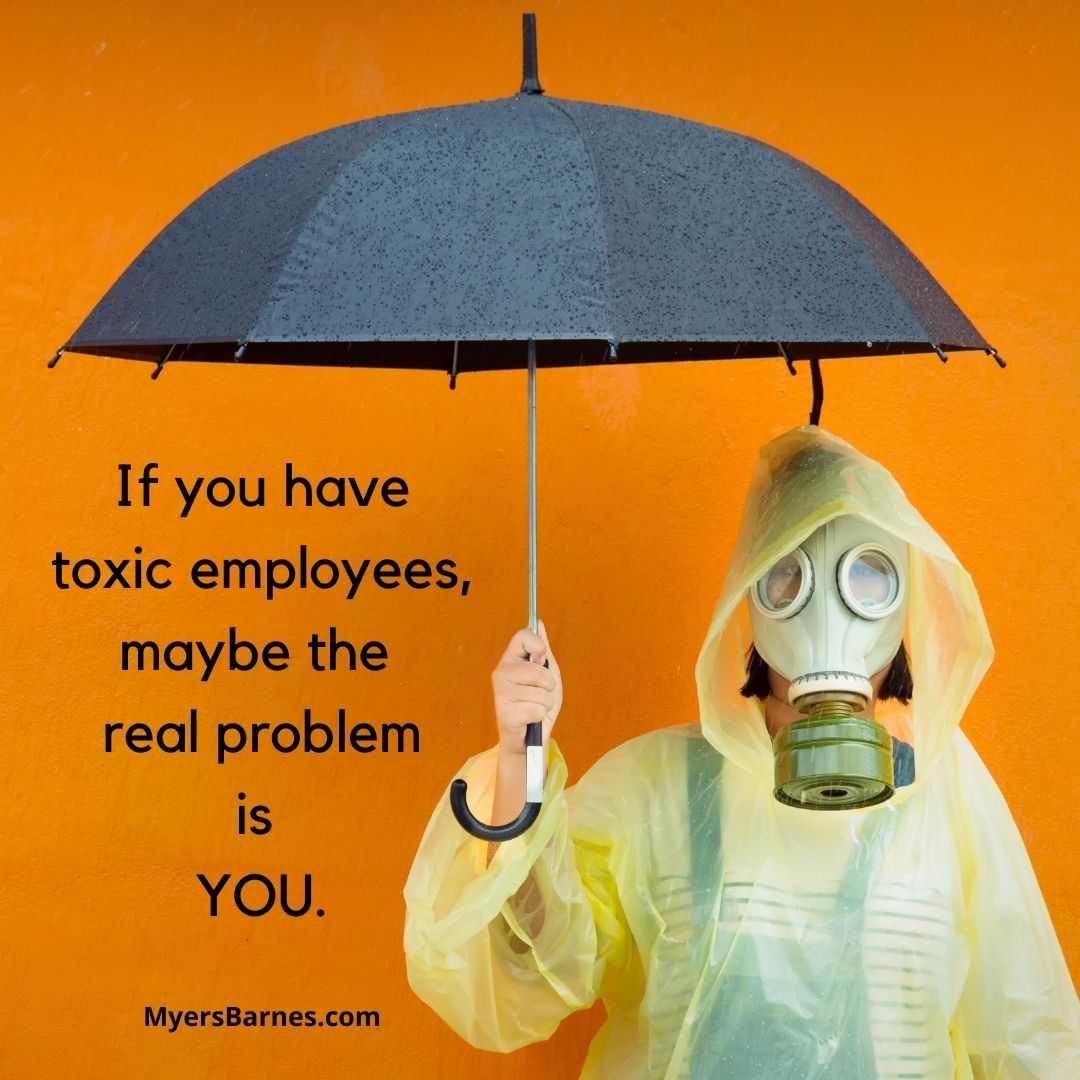 There are people on your team who are polluting your workplace, infecting harmless people.You probably already know who they are. The lazy one who does enough to get by. The malcontent who believe they are worth more than they get. The office gossip, The habitual latecomer and the one who spends an inordinate amount of work time on personal stuff. Consider this an infestation and start right now to learn how to deal with toxic employees.
There are people on your team who are polluting your workplace, infecting harmless people.You probably already know who they are. The lazy one who does enough to get by. The malcontent who believe they are worth more than they get. The office gossip, The habitual latecomer and the one who spends an inordinate amount of work time on personal stuff. Consider this an infestation and start right now to learn how to deal with toxic employees.
Find the source.
Use the practice of Management By Walking (or Wandering) Around (MBWA). Pay attention to the signs:
- Averted glances from team members as you walk by—like the kid in school who doesn’t want to be called on by the teacher
- The loud person who wants everyone to know how impressive they are
- The drama queen (male or female) who stirs up trouble, bringing as many people as possible into a situation and blowing it out of proportion
- The office gossip
- An individual who seems unusually busy or flustered, but not productive
- Someone who is quick to offer excuses
- The complainer who never seems to be satisfied
- The casual person who arrives late, leave early, and takes advantage of personal time off
- The one who will claim credit and place blame
- An employee who uses “I” and “me” more than “we” and “us”
- The first one to offer criticism and the last one to present a solution
- That annoying person who uses their phone during meetings
Deal with the bad employee.
No matter how carefully you screen candidates, some of them will turn into bad employees. You might overlook the problem for a while. Remember, however, that toxicity will spread. Co-workers become resentful and you might lose some of your most valuable talent because they want a better work environment.
Stop ignoring the problem. Try solving the problem with these tips for handling toxic employees.
- Take them aside and show that you are aware of the bad behaviors. Suggest an attitude adjustment and be specific. “You need to arrive at 8:30, like everyone else” or “From your comments in the meetings, I sense you’re unhappy” or “I want to remind you that we work as a team here. Pointing fingers and not holding yourself accountable show a lack of team effort.”
- Discuss the sources of their flaws. Create a detailed plan for overcoming the issues, like meeting sales goals, following up with leads, and improving relationships with co-workers.
- Put the onus on them for a solution to the workplace problem. Don’t allow finger-pointing but rather ask for positive ways for this particular individual to handle the situation.
- Use empathy rather than threats. An employee who fears for their job will react like a cornered animal, assuming a purely defensive mode and flailing at anyone who approaches. Conversely, being understanding and demonstrating a willingness to address the issues shows that you value that person (assuming you still do).
- Present a plan for moving forward. When you’ve tried all of the above, you need to take a tougher approach. Essentially, this individual is choosing not to meet their responsibilities for the job. Lay out the conditions for remaining in your employ. Detail the specific steps and goals, along with the timeline for achieving them. Be clear that you are not firing this person but that they are making the choice to de-hire themself.
Be the leader your team needs
When toxic behavior persists, the problem is not the difficult employee, but YOU. By ignoring the situation, you allow the unhealthy environment to continue. Your productive and valued team members undoubtedly recognize the flaws in the toxic employee. While they are first annoyed by the errant co-worker, the frustration will turn to you, as the “leader” who is allowing this individual to continue to disrupt the workflow and environment.
What does this say about you?
You’re an enabler. Your tolerance of the behavior allows it to continue. The weak link is not going to change unless you demand it. By not doing so, you’re indicating that the performance is acceptable, and, therefore, enabling it to continue.
Your standards are inconsistent. If you expect some people to meet (or exceed) their goals, while others can get by with less, the standards you think you’ve set have no credibility.
You accept mediocrity. This toxic environment will indeed fester when you let it. Good team members will see that mistakes are ok. Putting forth a partial effort is fine, because they see it happening, without any repercussions.
You don’t value your good employees. Undoubtedly, someone on your team is working harder to make up for that bad employee. Someone is correcting the mistakes and finishing the details. You’re allowing that to continue, which indicates you don’t mind others doing more than their share.
It’s easy to lead a group of highly motivated self-starters. But good leadership shows itself when difficult situations arise.


